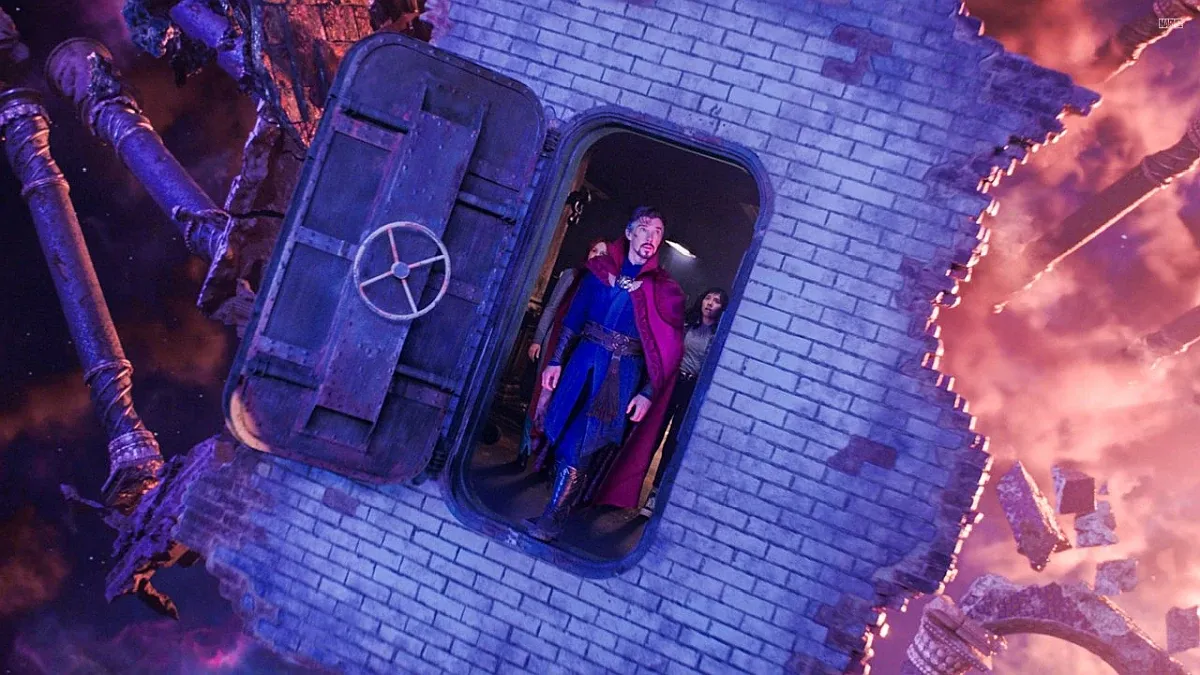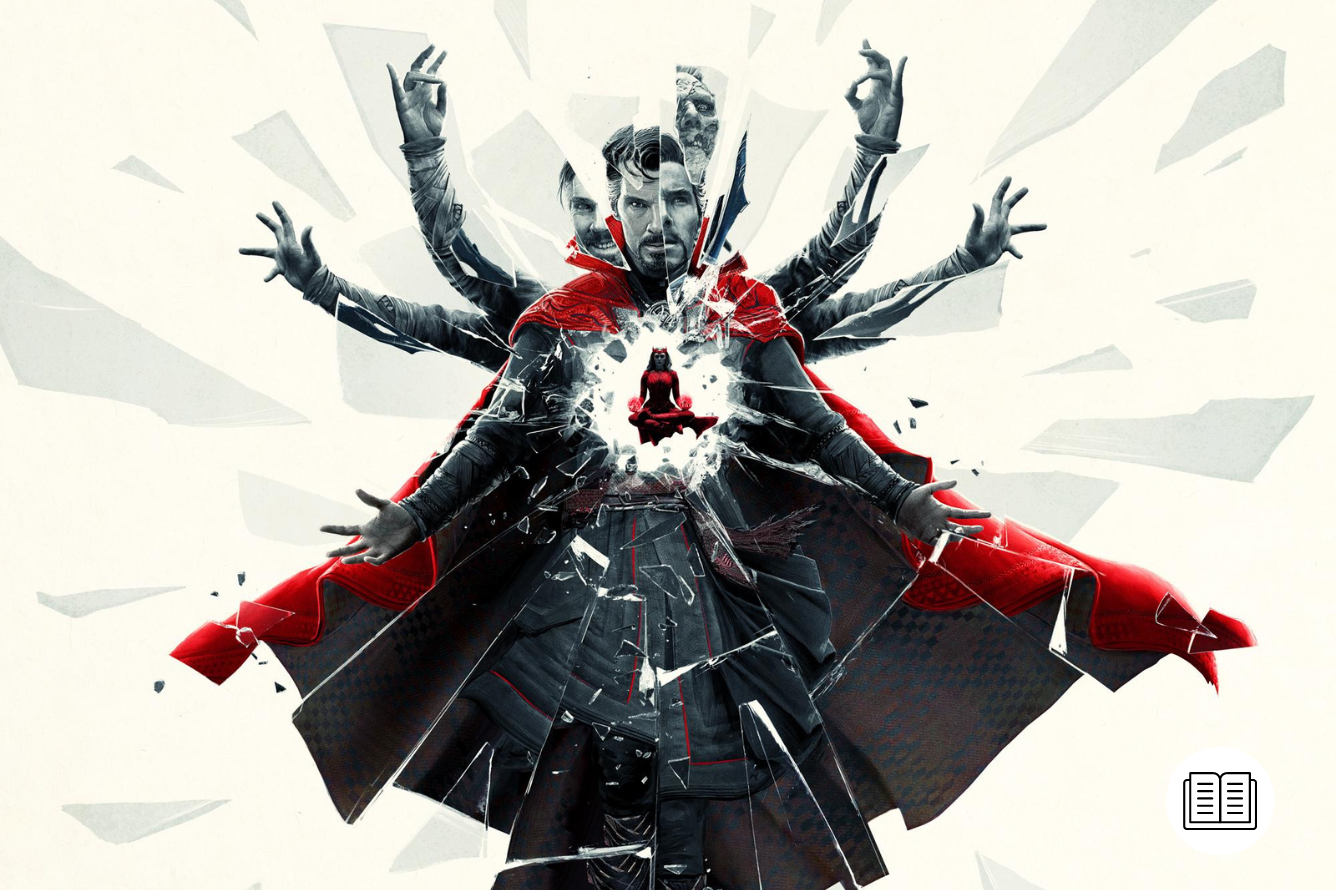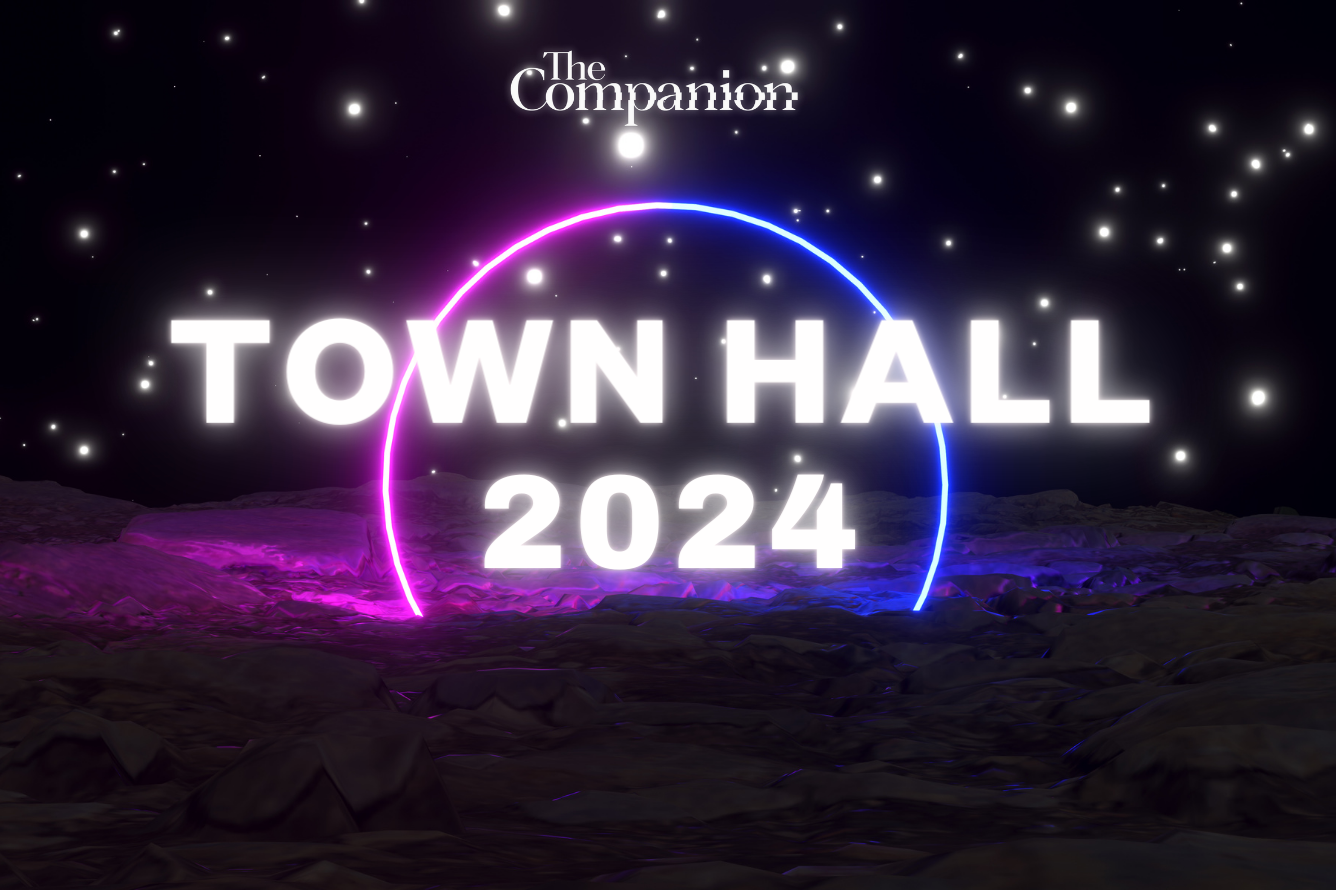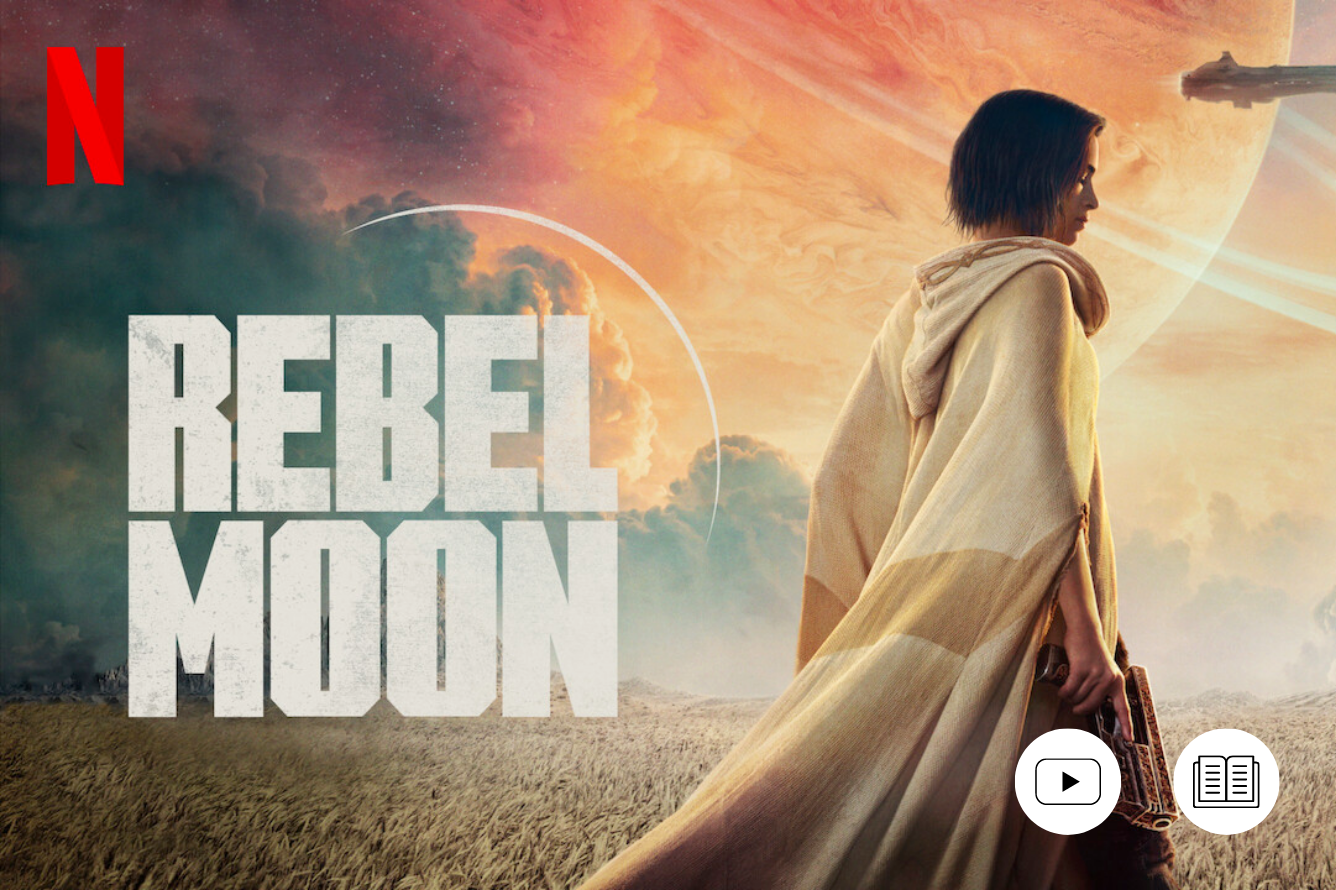When I was a kid, I watched Star Trek: The Next Generation religiously. I was mesmerized by the sassy androids and shiny touchscreens of the 24th century. But there’s one image in particular that has stayed with me since my childhood. It’s from the Season 7 episode ‘Parallels’ (S7, Ep11), and it’s of Picard and the bridge crew staring, awestruck, at the sight of countless USS Enterprises spreading out into the cosmos – all from alternate universes.
This was my first exposure to the theory of a ‘multiverse’. The idea is that there exist multiple, perhaps even infinite, versions and variations of the universe we inhabit and, therefore, multiple versions of you and me, too.

The theory itself remains controversial in scientific circles because it’s extremely hard to test and prove it, leaving it open to multiple and highly complex interpretations. Whilst the scientific community remains hesitant, multiverse theory now appears to have gone fully mainstream. It’s provided fodder for sci-fi screenwriters and authors for decades, but in recent years it’s popped up as a core component in many highly profitable movies and, going by trailers and synopses of upcoming features, it’s about to appear in many more.
What’s happened to turning a fringe scientific theory into a comfy box office? The storytelling potential has always been there, but is it that audiences are now more science-savvy? Or has the notion of multiple universes taken on new appeal?
Making the Multiverse a Multimedia Mainstay
Spider-Man: Into the Spider-Verse proved in 2018 that you can make an animated movie about multiple Spider-Men (and women) from alternate universes teaming up, and audiences have no problem keeping up. In 2022, Marvel Studios’ put the multiverse at the heart of its blockbuster slate. There’s Spider-Man: No Way Home, in which Peter Parker (Tom Holland) accidentally breaks the multiverse, allowing characters from other movie franchises to show up in the new MCU continuity. Then, a few months later, came Doctor Strange in the Multiverse of Madness (2022). The trend continues into 2023 with Ant-Man and the Wasp: Quantumania (re-)introducing time-traveling multiversal menace Kang the Conqueror (Jonathan Majors) and Spider-Man: Across the Spider-Verse introducing yet more fan-favorite Spider-folk.
Of course, Marvel’s multiverse has already been mentioned and set up in other MCU movies and TV shows, including Avengers: Endgame (2019), WandaVision (2021), and Loki (2021). It’s also central to the What If…? (2021) anthology series on Disney+. Originally a comic book concept, the What If…? series presents alternate versions of characters, such as Peggy Carter getting the super-soldier serum injection instead of Steve Rogers and T’Challa being abducted by the Ravagers to become Starlord instead of Black Panther.

Inevitably, some are already critical of the MCU’s fledgling multiverse plans (can we call it the MCMU yet?). They say there’s little at stake if we know a character could die and then ‘return’ from a different universe or that the stories themselves will become too convoluted for casual cinemagoers.
To Marvel readers, though, the multiverse is nothing new. It’s been part of the Marvel universe since early issues of Captain Britain (with mentions of other dimensions and realms occurring even earlier) and has led to many-layered, intertwining multiversal stories over the years. In acknowledgment of this, the version of Earth that occupies the main continuity across Marvel books is Earth 616 – it’s not even Earth 1!
And it’s not just comic book readers who’ve been keeping up with multiversal storytelling. It’s also been central to the plots of many films and TV shows for decades. Star Trek and Doctor Who are obvious examples, as well as other shows, such as Sliders, Fringe, Rick and Morty, and The OA.
There have also been many movies that tapped into the storytelling potential of this hotly-debated scientific theory, like Source Code (2011), Coherence (2013), Another Earth (2011), and The One (2001). As well as plenty of multiversal plots that are central to the storylines of books both old and new across a range of genres, including Philip Pullman’s His Dark Materials trilogy (1995-2000), Dark Matter (2016) by Blake Crouch, The Chronicles of Narnia (1950-56) by C.S. Lewis, Terry Pratchett and Stephen Baxter’s The Long Earth (2012-16), The Light Between Us (2016) by Katie Khan, Life After Life (2013) by Kate Atkinson, and Ted Chiang’s excellent novella Anxiety is the Dizziness of Freedom (2019).
You’ll also find references to multiple worlds across many cultures and religions going back centuries, like the nine realms in Norse mythology and the many planes of existence in Buddhist cosmology.
Further Reading on Mythology in Sci-Fi
- Marvel’s Mytharc: The MCU and Modern Mythology in Storytelling - Between Iron Man and Avengers: Endgame, Marvel took the concept of the ‘Mytharc’ to incredible heights.
- Loki | From Myth to MCU, Loki Was Always Queer - Loki’s gender-fluidity and bisexuality were finally confirmed in the show, but fans have always known it to be so.
- Stargate | Atlantis in Myth: From Ancient History to Stargate's Lost City - From Plato to pseudohistory, how the mythical Lost City of Atlantis went from ancient history to Stargate’s Ancient city-ship.
- Merlin and the Holy Grail: The Medieval Myth Behind the SG-1 Storyline - In Stargate SG-1 Season 9, the familiar figure of Merlin appears in an unfamiliar guise as SGC’s best hope of defeating the Ori.
The Real Theory of the Multivertse
The science behind the multiversal theory is anything but straightforward. It’s constantly being debated and is often the subject of popular science books, like Brian Greene’s The Hidden Reality (2011). But where does real-life science stand in current thinking about the multiverse? Not surprisingly, in multiple places at once.
“There are actually different kinds of multiverse,” Roberto Trotta tells The Companion. Trotta is a Professor in Astrostatistics at the Imperial College London and International School for Advanced Studies (Trieste).
He explains that one of them is the multiverse of quantum mechanics. “The idea is that every time a measurement of a quantum particle is performed (loosely speaking), the physical universe splits in multiple copies, so that in each of the copies one of the possible outcomes is physically realized.”

This is called the many-worlds interpretation. It’s the kind of multiverse we most often see in science fiction and tends to be portrayed as a splitting of realities when a decision is made. One example of this kind of multiverse is in Avengers: Infinity War (2018) when Doctor Strange uses the Time Stone to observe 14,000,605 alternate outcomes of the battle against Thanos, as they are played out in alternate realities. Or in the TV show Devs, when multiversal iterations of individual characters are overlaid within the same scene to illustrate different choices made.
“Another theory is that of the cosmological multiverse. There are infinitely many possible realizations of our universe, so all that is physically possible exists somewhere ‘out there’.”
He gives the example of a universe where everything is identical to this one, apart from the top you’re wearing being a different color from the one you have on right now. But there could be other universes where things are so vastly different that even the laws of physics no longer apply.
Andrei Linde, a theoretical physicist, Professor of Physics at Stanford University, and proponent of the inflationary multiverse theory, recommends that people visualize this like a vast ocean.
“Just like an ocean can consist of liquid water with occasional icebergs, which are also water, but frozen. So you may think about the multiverse as an enormously large space consisting of enormously large parts with extremely different laws of physics. These parts are so far from each other that we cannot travel there and see them.”
The problem with all of the multiverse theories is the difficulty they present in offering any evidence. “All of this is speculative,” Trotta says. Many experts who don’t buy into any of the multiverse hypotheses say they shouldn’t even be considered science because they can’t be proven.
The science may remain in doubt, but one thing’s for sure. There’s something boundlessly fascinating about the idea that different versions of the universe with different versions of you, whether real or not, might exist right now. This is why it’s no surprise that multiverse theories present all kinds of exciting opportunities to explore in fictional worlds.
Why the Multiverse Caught On
So why has multiversal theory crossed over from an occasional plot device into blockbuster franchise fuel?
One reason could be that these theories have given creators the scope to explore limitless storytelling opportunities. Harnessing multiverse theory as a storytelling device also allows creators and brand owners to tap into rich veins of cultural nostalgia. An example right now is the (maybe) upcoming The Flash (2023) movie.
Taking its cues from a DC Comics storyline in which the Flash moves so fast he breaks through into alternate realities, Warner Bros is using this as a way to reintroduce Michael Keaton’s Batman back onto the big screen. On the one hand, this could be seen as a cynical way to monetize the yearnings of Gen X and Millennial moviegoers who are now old enough to miss their youth, much as Spider-Man: No Way Home (2022) did with Toby Maguire, the star of Sam Raimi’s Spider-Man (2002) 20 years earlier.
On the other hand, though, it shows how mainstream audience’s newfound ease with accepting multiversal plots allows Warner Bros to hit reset on their uneven attempts to mirror the box office success of the MCU, giving themselves more room to experiment and get a little more creative with their IP.
It’s this experimental approach that I think is at the heart of multiversal storytelling’s newfound popularity. It gives audiences and creators license to explore moral dilemmas and roads not taken, with popular and familiar characters, without having to fully commit to an ongoing continuity. It’s a fictional safe space to play in, that also allows us to consider the ‘what ifs’ in our own lives as an outlet for questions about the lives we could be living, better or worse if we had taken different paths. It also reminds us of the power we have to change our lives at any moment.
It can be a positive and life-affirming exercise to consider what other versions of Earth and ourselves might be like because it can help us to feel more gratitude for the life we have. I’m reminded of what The Ancient One (Tilda Swinton) says to Doctor Strange (Benedict Cumberbatch) in the movie Doctor Strange (2016):
“This universe is only one of an infinite number. Worlds without end. Some benevolent and life-giving, others filled with malice and hunger. Dark places where powers older than time lie ravenous… and waiting.”
The Optimism of Endless Possibility
A few years ago, when I was perusing a subreddit about The OA (which has a central multiverse premise), I came across a story that I think about often. The author wrote simply that The OA changed their view of the world. Because now, when they feel low and revisit trauma from their past, they consider different versions of themselves. Not with envy or to live vicariously through these imagined other selves, but because there’s hope hiding in that thought and, at least for them, a possibility for change in it, too.
The final few lines of the post read:
“If you ever feel shitty about something you don’t have the power to change, just remember there is a version of you out there that is unaffected and use that to change your perception and how you go about processing that shitty thing. It opens you to a whole new dimension of possibilities.”
Contemplating the different versions of our universe and different versions of ourselves all existing at once can inevitably lead to self-defeating daydreams about what cooler, smarter, or more attractive versions of ourselves are doing right now. But it’s when we put those thoughts aside we begin to realize the potential in our own lives, and our unending capacity for change, that multiversal storytelling eventually points us toward.
Living through tremendous uncertainty, as we all have been, stories that inspire us to hope, and imagine better worlds for ourselves are vital. They give us the best chance of creating that better world, here in our own universe.
This article was first published on December 5th, 2021, on the original Companion website. It has been updated to reflect the release of some of the movies it mentioned.
Further Reading on All Topics
- Marvel’s Mytharc: The MCU and Modern Mythology in Storytelling - Between Iron Man and Avengers: Endgame, Marvel took the concept of the ‘Mytharc’ to incredible heights.
- Loki | From Myth to MCU, Loki Was Always Queer - Loki’s gender-fluidity and bisexuality were finally confirmed in the show, but fans have always known it to be so.
- Stargate | Atlantis in Myth: From Ancient History to Stargate's Lost City - From Plato to pseudohistory, how the mythical Lost City of Atlantis went from ancient history to Stargate’s Ancient city-ship.
- Merlin and the Holy Grail: The Medieval Myth Behind the SG-1 Storyline - In Stargate SG-1 Season 9, the familiar figure of Merlin appears in an unfamiliar guise as SGC’s best hope of defeating the Ori.
The cost of your membership has allowed us to mentor new writers and allowed us to reflect the diversity of voices within fandom. None of this is possible without you. Thank you. 🙂








